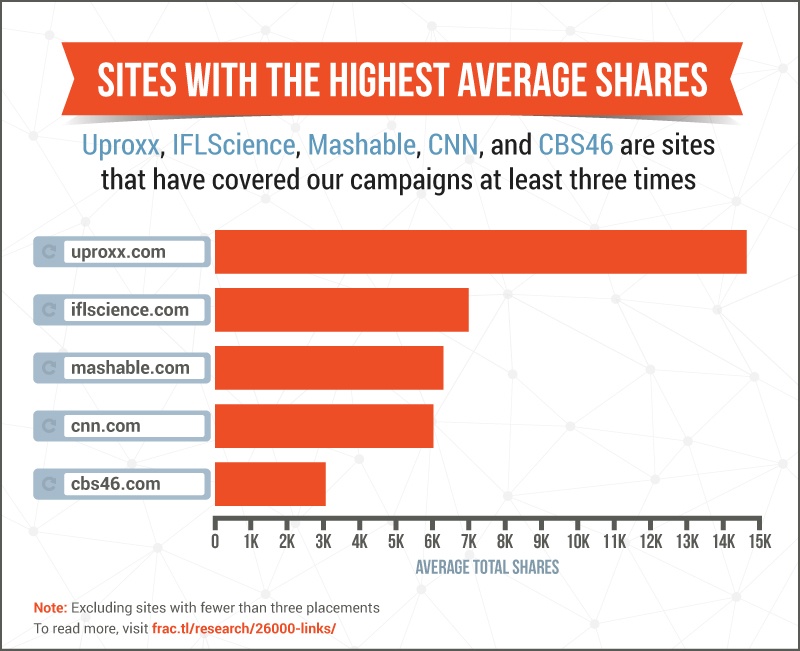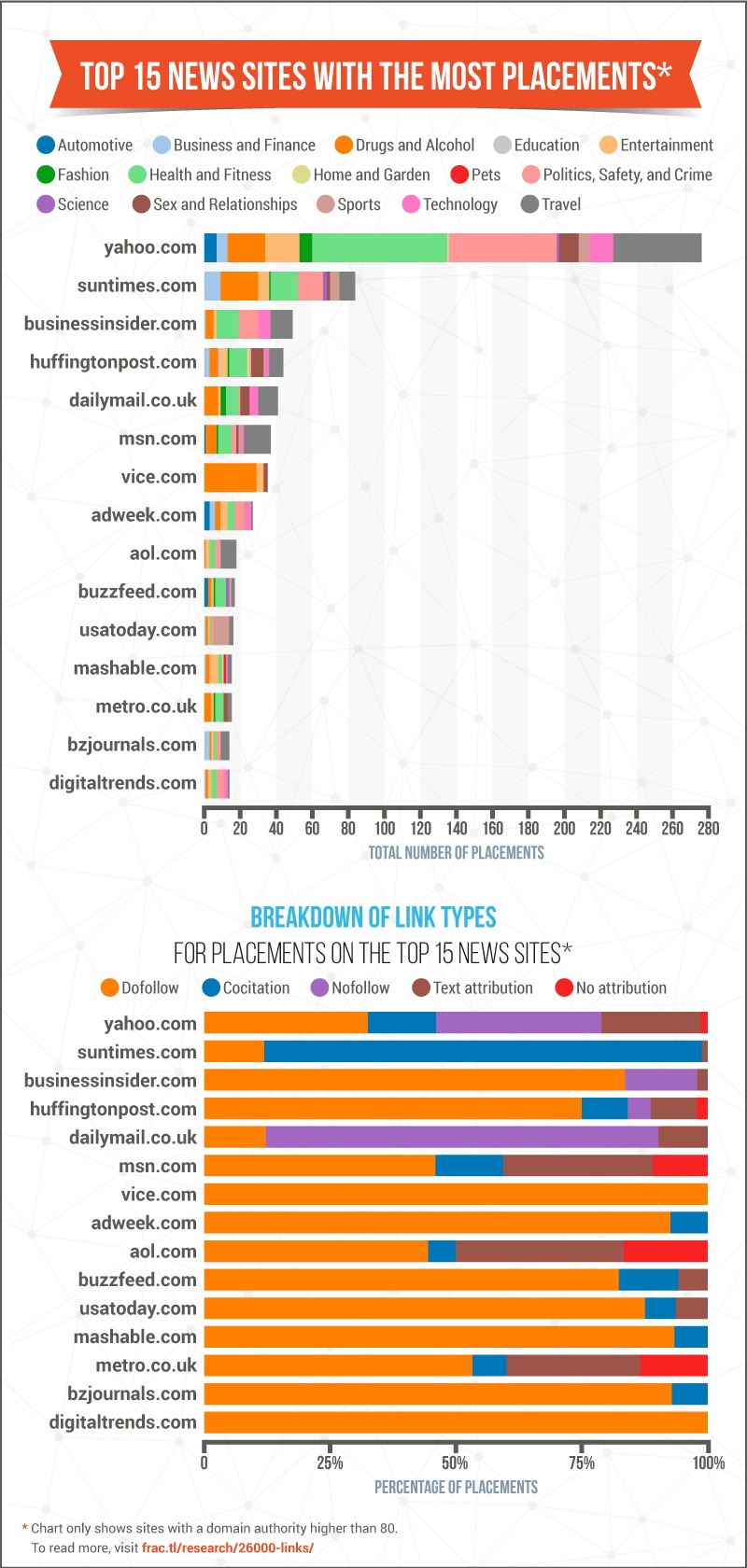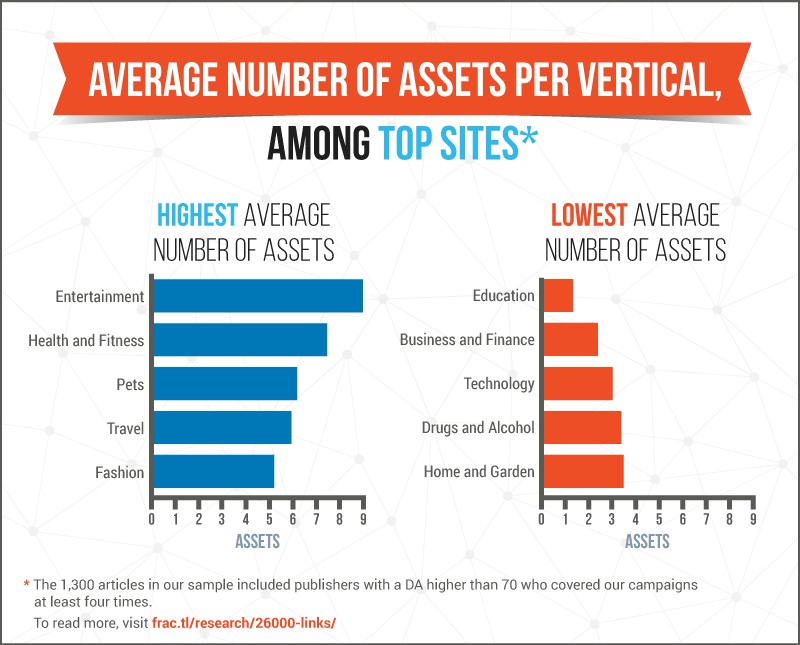![, 3 Takeaways From Building 26,000 Links [Study]](https://www.frac.tl/wp-content/uploads/2017/03/What-Building-26000-Links-Taught-Us-About-Content-Marketing_1.jpg)
Case studies, such as the two mentioned above, have helped us reflect on what has worked and what hasn’t. While we’ll continue to share our stories, we decided to do something thing a little different. We collected all of the data from every single one of our projects in the past three years. Overall, this accounts for 31,000 media stories and over 26,000 links for our clients. Here’s what the data taught us.
1. The Majority of Links Will Get No Shares
That’s right – most of our links will get zero shares. We’re not the first ones to notice this. Our friends at Moz and BuzzSumo looked at one million articles and also found that three-quarters of them received no social shares.
Even most high-quality links (those with a high Domain Authority or DA) did not earn any social traction.
- 54.2 percent of links with a DA over 59 received zero shares.
- 50.0 percent of links with a DA over 79 received zero shares.
- 51.8 percent of links with a DA over 89 received zero shares.
On average, our campaigns are shared 11,000 times on social media and get 110 placements. Yet, the top-performing link for an average campaign accounts for 62.7 percent of total shares.
This means that content marketers need to have a promotions strategy that focuses on both building high-quality links and encouraging social traction. Even if a top site writes about your content, it doesn’t mean they will promote it on their social platforms. The following five sites have covered our content at least three times and have given us the highest average social shares.
2. Different Sites Will Link to Your Content in Different Ways
As content marketers, we care about the types of links we receive, and different sites tend to link to outside content in different ways. This may be due to their editorial standards or simply a writer’s preference. Even if publishers agree to cover your work, they may not use a dofollow link.
It is important to keep track of how sites link to your work and whether they use strong anchor text (the keywords that are associated with the link).
3. Not Everyone Will Use All Your Visual Assets
It’s always exciting to see a publisher use all of your assets in their story; however, this will not always happen. We looked at the word and asset (image and video) count for 1,300 articles on top sites – more specifically, our analysis looked at placements on sites with a DA of 70-plus who had covered our content at least four times. Each link is attributed to a particular campaign, and each campaign is listed under one of 15 verticals.
We found that publishers in the education vertical covered the lowest number of images and videos on average, whereas entertainment publishers covered the highest number. Some of this can be attributed to differences in the number of assets included in a campaign initially. However, verticals with a high average asset count indicate a higher tolerance for using a large number of outside assets.
Successful content marketing requires an agency that knows how to create impactful content, build links, and gain social traction. The 26,000 links and millions of social shares that we’ve earned for our clients are indicative of Fractl’s prowess in all three areas.





